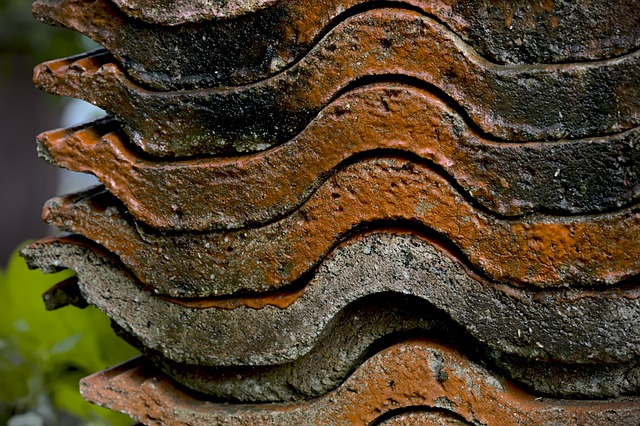In diverse Austin, Texas climate, proper roof ventilation is overlooked but crucial for maintaining a healthy home environment. It circulates fresh air, regulates indoor temperatures, and prevents moisture buildup, mitigating issues like mold, mildew, wood rot, and weakened structural integrity (austin roof repair). Regular maintenance, including checks and repairs, is integral to proactive home maintenance routines, saving costs and extending roofing materials' lifespan. Using breathable materials and proper flashing further ensures a dry interior environment (austin roof repair). Proactive visual inspections, cleaning, and addressing blockages prevent future problems, safeguarding the home from elements (austin roof repair). Effective ventilation offers lasting solutions, reducing the need for costly austin roof repair jobs.
In the heart of Austin, Texas, where hot summers and moist climate conditions prevail, proper roof ventilation is a non-negotiable aspect of home maintenance. This article delves into the importance of roof ventilation in managing moisture buildup, a common issue that can lead to costly repairs. By understanding the signs of insufficient ventilation and following a step-by-step guide to fixes, homeowners can prevent damage and ensure their Austin properties remain protected from within. Learn how the right roofing materials and effective long-term strategies contribute to optimal ventilation.
- Understanding Roof Ventilation and Its Importance in Austin Climate
- Common Signs of Insufficient Roof Ventilation
- The Role of Proper Roofing Materials in Moisture Management
- Step-by-Step Guide to Diagnosing and Fixing Roof Ventilation Issues
- Long-Term Benefits of Effective Roof Ventilation for Austin Homes
Understanding Roof Ventilation and Its Importance in Austin Climate

In the diverse climate of Austin, Texas, proper roof ventilation is an often-overlooked yet critical component for maintaining a healthy home environment. The city’s hot summers and occasional winters require effective insulation and temperature regulation, which is where roof ventilation plays a pivotal role. Adequate ventilation helps to circulate fresh air, regulate indoor temperatures, and prevent the buildup of moisture, all of which are essential considerations for Austin roof repair and long-term home preservation.
Moisture accumulation on roofs can lead to various issues, including the growth of mold and mildew, wood rot, and weakened structural integrity. By ensuring proper ventilation, homeowners can mitigate these problems. This involves strategically placing vents in attics or roofs, allowing hot air to escape during summers and preventing excessive warmth in winters. Austin’s unique weather patterns demand proactive measures, making regular checks and repairs for optimal roof ventilation an integral part of home maintenance routines.
Common Signs of Insufficient Roof Ventilation

Inadequate roof ventilation is a common issue that can lead to significant problems within your Austin roof repair. Some telltale signs indicate when proper ventilation is lacking. Look out for mold or mildew growth, especially in corners or along the ceiling edges. These fungi thrive in damp environments and are clear indicators of moisture buildup caused by poor ventilation. Another visible symptom is a musty odor persisting throughout your home; this aroma often signals the presence of excess humidity resulting from inefficient roof air circulation.
Additionally, keep an eye on warped or curled roofing materials, such as shingles or metal sheets. These physical deformities can be caused by excessive heat and moisture trapped within the attic space. Insufficient ventilation also results in increased energy bills during warmer months due to the lack of natural cooling from proper airflow. Recognizing these signs is crucial for homeowners in Austin, prompting them to take proactive measures through regular maintenance or calling in professional Austin roof repair services to address ventilation issues before they escalate.
The Role of Proper Roofing Materials in Moisture Management

Proper roofing materials play a pivotal role in moisture management within your home’s structure. When it comes to preventing moisture buildup, Austin roof repair experts emphasize the significance of selecting durable and breathable materials. In regions with varying climates, like Austin, Texas, roofs are exposed to intense sunlight, fluctuating temperatures, and occasional extreme weather events. Therefore, roofing systems must withstand these conditions while allowing proper air circulation to prevent condensation and mold growth.
Breathable materials such as asphalt shingles with high-quality underlayments ensure that excess moisture can escape from the roof deck, reducing the risk of water damage and structural issues. Additionally, proper flashing and sealing around vents and other openings are crucial to maintain a dry interior environment. Investing in high-quality roofing materials and meticulous installation techniques during Austin roof repair or replacement projects is essential for long-term comfort and protection against potential moisture-related problems.
Step-by-Step Guide to Diagnosing and Fixing Roof Ventilation Issues

Roof ventilation problems can lead to significant issues, like moisture buildup, which may result in costly damage. Diagnosing and fixing these problems requires a systematic approach. Start by inspecting your roof for any visible signs of damage or blockages. Common culprits include fallen debris, poor installation, or blocked vents caused by nesting animals. Next, use a flashlight to examine the ventilation channels, looking for any obstructions or inadequate airflow. If vents are covered or damaged, they need to be cleared or replaced.
For effective austin roof repair, address the root cause. Ensure proper ventilation by checking the underlayment and replacing it if necessary. Use a moisture meter to identify areas with high humidity, indicating potential leaks or poor ventilation. Once identified, fix any leaks promptly and re-insulate affected areas. Regular maintenance, including cleaning vents and examining the roof structure, can prevent future issues, ensuring your home remains protected from the elements.
Long-Term Benefits of Effective Roof Ventilation for Austin Homes

Effective roof ventilation is not just a short-term fix; it offers long-lasting benefits for Austin homes. By allowing proper air circulation, it prevents moisture buildup, which can lead to serious issues like mold growth and wood rot over time. These problems not only compromise the structural integrity of your home but also pose health risks and significantly increase repair costs.
Regular maintenance and adequate ventilation work hand in hand to protect your Austin roof from damage. It keeps the temperature balanced, reduces pressure buildup, and ensures that any condensate formed during humid summer months or after rainfall can dissipate quickly. This, in turn, prolongs the lifespan of your roofing materials, saving you from costly austin roof repair jobs down the line.
In conclusion, addressing roof ventilation issues is a crucial aspect of maintaining a comfortable and healthy home in Austin’s unique climate. By understanding the importance of proper ventilation, recognizing common signs of insufficient airflow, and utilizing the right roofing materials, homeowners can prevent moisture buildup and associated problems. Following a systematic approach to diagnosing and fixing these issues ensures long-term benefits, including improved energy efficiency, reduced risk of structural damage, and enhanced indoor air quality, making it an essential consideration for any Austin roof repair.
